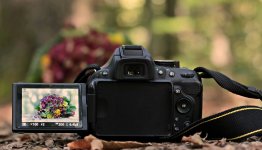Flowers have an undeniable allure that makes them a favorite subject for photographers. Capturing the delicate details, vibrant colors, and intricate patterns of flowers can be a truly rewarding experience. One crucial aspect of achieving stunning flower photography is selecting the right lens. In this blog post, we will explore various lenses commonly used in flower photography and discuss their unique features, benefits, and considerations.

- Macro Lens:When it comes to capturing the intricate details of flowers, a macro lens is the go-to choice for many photographers. Macro lenses offer high magnification capabilities, allowing you to get incredibly close to your subject. With a minimum focusing distance and 1:1 reproduction ratio, these lenses capture fine textures, intricate patterns, and even the tiniest dewdrops on petals. Macro lenses typically have focal lengths ranging from 50mm to 200mm, providing versatility for different shooting scenarios.
- Telephoto Lens:A telephoto lens can be a valuable addition to your flower photography toolkit. While macro lenses excel at close-up shots, telephoto lenses allow you to capture flowers from a distance. This is particularly useful when photographing flowers in their natural environment or capturing floral landscapes. Telephoto lenses offer longer focal lengths (usually 70mm to 300mm or more), enabling you to isolate specific flowers or create compelling compositions with blurred backgrounds.
- Wide-Angle Lens:Although not the most commonly used lens for flower photography, a wide-angle lens can provide a unique perspective when capturing flowers. Wide-angle lenses have shorter focal lengths (typically 10mm to 35mm) and offer a wider field of view, making them ideal for showcasing flowers within their surroundings. These lenses can be particularly effective when photographing fields of wildflowers, flower gardens, or incorporating foreground elements to add depth and context to your images.
- Lens Considerations:When choosing a lens for flower photography, consider the following factors:
a. Aperture: A lens with a wide maximum aperture (e.g., f/2.8 or wider) allows for a shallow depth of field, creating a pleasing background blur and isolating the flower from its surroundings. However, narrower apertures (e.g., f/8 to f/16) are useful for achieving a greater depth of field and ensuring the entire flower is in focus.
b. Image Stabilization: Flowers can be affected by even the slightest breeze, leading to unwanted motion blur. Opting for a lens with image stabilization (IS) or vibration reduction (VR) can help counteract camera shake and improve image sharpness, especially when shooting handheld or in low-light conditions.
c. Weight and Portability: Consider the weight and portability of the lens, especially if you plan to photograph flowers in different locations. Lightweight lenses are more comfortable to carry and handle during extended periods of shooting.
